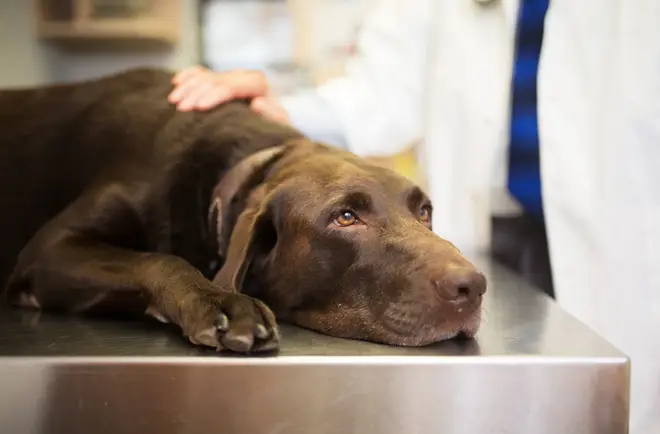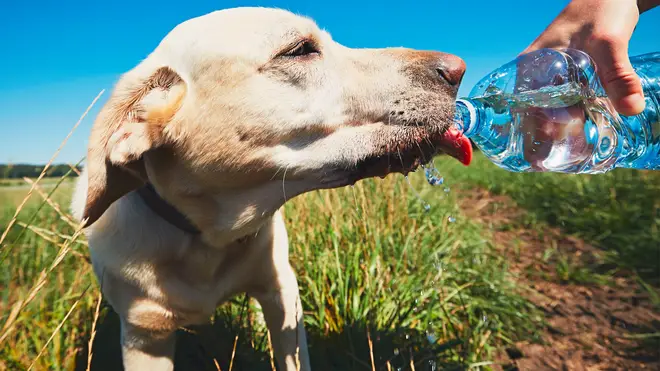What should I do if I see a dog locked in a hot car?
14 June 2023, 15:50

As Brits prepare for soaring temperatures this month, experts are warning pet owners that dogs can and do die in hot cars.
The heatwave is not over yet with temperatures reaching over 30 degrees this week in some areas.
And while many people will be delighted to see the sun out, it is important to make sure we're looking after, not only ourselves, but also our pets during the hot months.
This includes remembering one vital piece of information the RSPCA want everyone to know; dogs die in hot cars.
While many people think it is fine to leave a dog in a car if they're parked in the shade or have left the window open, they are wrong.

Even when the weather doesn't feel that warm, a car can become as hot as an oven. For example, the RSPCA explain that if it is 22 degrees outside, a car can reach 47 degrees within an hour.
This is seriously dangerous to your pet and will cause them suffering and harm and can also be fatal.
Here's what you should do if you see a dog locked in a warm car:

1) Assess the dog’s condition
According to the experts at the RSPCA, you must first establish the animal's health and condition.
If they are displaying any signs of heatstroke, you should call 999 immediately.
You can find the symptoms of heatstroke further down on this page.

2) Taking action
In many cases if the dog’s situation becomes critical and help is too far away, people break into cars to help the pet.
However, the RSCPA explain: “If you decide to do this, please be aware that without proper justification, this could be classed as criminal damage and, potentially, you may need to defend your actions in court.”
They explain: “Make sure you tell the police what you intend to do and why. Take pictures or videos of the dog and the names and numbers of witnesses to the incident.
“The law states that you have a lawful excuse to commit damage if you believe that the owner of the property that you damage would consent to the damage if they knew the circumstances (section 5(2)(a) Criminal Damage Act 1971).”
Once the dog is removed from the car, you can assess more clearly if the dog does have heatstroke.
For information on performing first aid to a dog with heatstroke, please see further down on this page.

3) Does the dog have heatstroke?
If the dog is not displaying symptoms of heatstroke, you should firstly find out how long the dog has been in the car for before making a note of the car’s registration plate.
If you are still concerned for the dog’s wellbeing, you can report this to the police.
Other options include attempting to find the owner – if you are outside a supermarket, you can have an announcement put out in the shop by staff.
Keep track of the dog’s condition, if it changes, call the police.

How do I recognise heatstroke in my dog?
Heatstroke can be fatal to dogs, so it's important to know the signs and first aid. Some of the signs to look out for include:
- Heavy panting
- Red eyes
- Red gums
- Hot skin
- Reduced activity
- Vomiting
- Collapsing
- Diarrhoea
- Excessively drooling
- The dog appears lethargic, drowsy or uncoordinated
- Difficulty breathing
What do I do if my dog has heatstroke?
According to information from the RSPCA, dogs suffering from heatstroke urgently need to have their body temperature lowered gradually for the best chance of survival.
This is what they say you should do:
- Move the dog to a shaded and cool area
- Immediately pour cool (not cold to avoid shock) water over the dog. Tap water (15-16°C) has been found to be the most effective at cooling dogs with heat-related illnesses. In a true emergency, any water is better than nothing.
- Wet towels placed over the dog can worsen the condition, trapping heat. In mild cases towels can be placed under the dog, but never over, and in a true emergency water immersion or pouring water with air movement is ideal
- Allow the dog to drink small amounts of cool water
- Continue to pour cool water over the dog until their breathing starts to settle, but not too much that they start shivering
- Dogs that have lost consciousness will stop panting, despite still having a very high temperature, these dogs require urgent aggressive cooling as a priority
- Throughout the treatment of heatstroke try to avoid pouring water on or near your dog's head, as there is a risk of them inhaling water which could lead to drowning, especially for flat-faced and unconscious dogs.
- Once the dog is cool, take them to the nearest vet as a matter of urgency
- Some types of dogs are more prone to heatstroke, like very old or young dogs, dogs with thick, heavy coats or dogs with very short flat faces like pugs and bulldog types. Dogs with certain diseases or on some types of medication are also more at risk.
For more information on what to do and tips for keeping dogs safe this summer, visit the RSCPA website here or call them on 0300 1234 999.




































